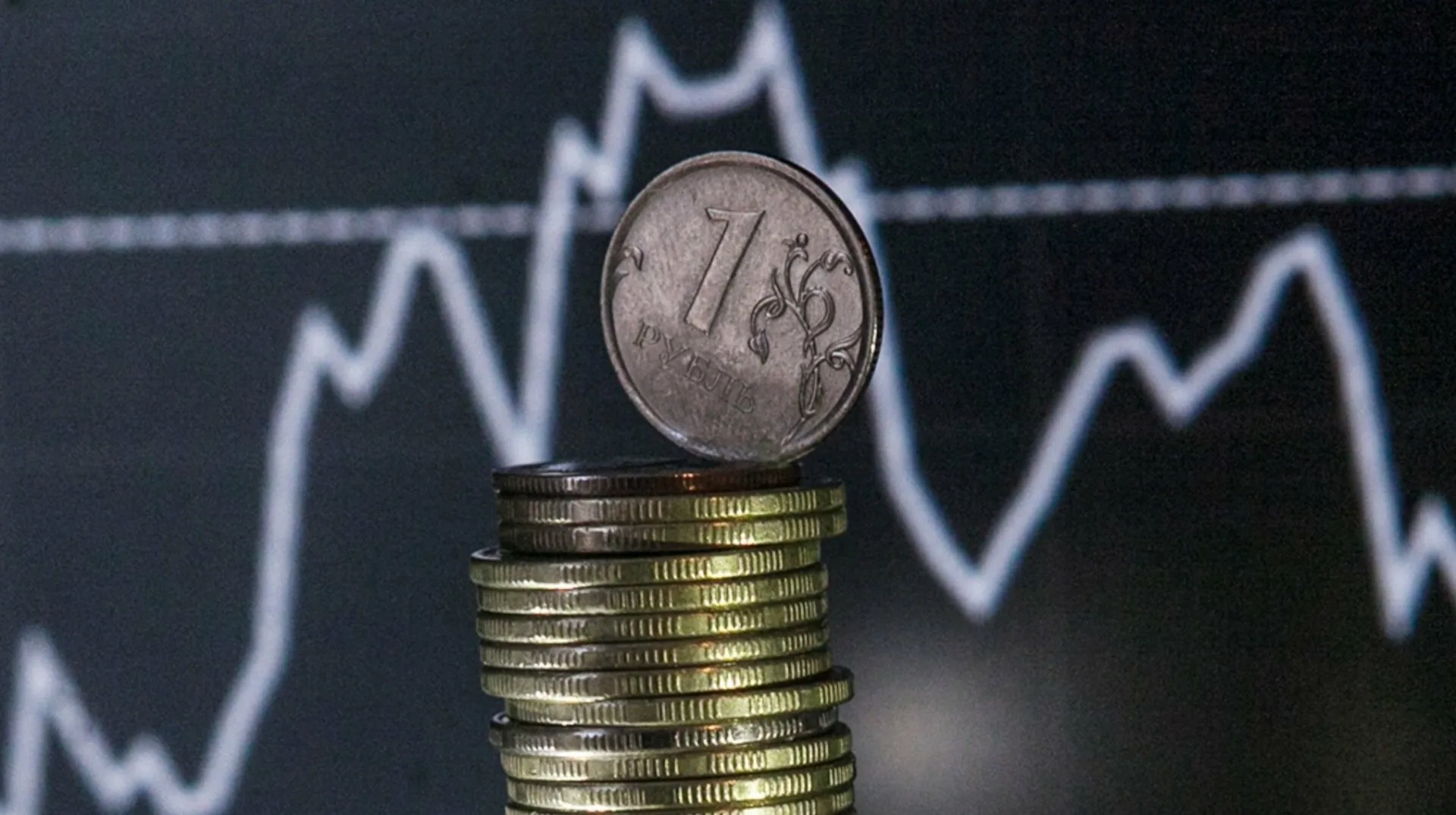IPO RU 2025: How to Participate in Russian IPOs through a Broker and Minimise Risks
Initial public offerings (IPOs) in the Russian market in 2025 are capturing the attention of international investors, offering access to rapidly growing companies in the IT and fintech sectors, where the total volume of offerings could exceed 200 billion RUB, according to analysts' forecasts. Participation through a broker simplifies the process for retail investors from any country, but necessitates an understanding of the local mechanisms of the Moscow Exchange (MOEX) and the new regulations from the Central Bank of Russia (CBR), which enhance transparency and protection. The share of retail participants in the order books has grown to 45% in 2024–2025, increasing allocation chances but also heightening competition and volatility risks, as evidenced by JetLend's 28% stock correction post-March 2025. This guide is aimed at a global audience, explaining the steps from account verification to post-IPO trading, with practical examples and strategies to turn potential losses into a sustainable income of 15–20% annually.
Choosing a Broker: The Key to Accessing the Russian IPO Market
Selecting the right broker is crucial not only for accessing IPOs but also for the quality of allocation, as platforms such as Tinkoff Investments or SberInvest are directly integrated with MOEX, ensuring real-time applications without delays. For foreign investors, the process begins with online KYC verification: upload your passport, confirm your address (bank statement or utility bills), and pass an AML check which takes 1–3 days, allowing you to fund your account via SWIFT or even cryptocurrency exchanges under transfer restrictions. Fees for IPOs are minimal — 0.15% of the amount at VTB My Investments compared to 0.3% at BCS, but be aware of hidden currency conversion fees (1–2% for USD/EUR to RUB), which are critical amidst the exchange rate volatility of the rouble at 10–15%. When comparing options, Tinkoff stands out for novices with a low threshold (30,000 RUB) and a 70% satisfaction rate for applications, while BCS offers premium access to tech IPOs like VK Tech with allocations of up to 80% for active clients. For a global audience, brokers with international partnerships, such as Interactive Brokers with a Russian desk, are suitable, where the IIS (Individual Investment Account) provides a tax deduction of up to 52,000 RUB annually, minimising the 13% personal income tax on profits. Before opening, check reviews on Trustpilot or Finam forums to avoid low-reliability platforms, and start with a demo account, simulating an application for a real IPO, such as the one planned by Finam in Q4 2025.
The Participation Process: Steps from Application to Share Allocation
Monitoring IPOs begins with the MOEX calendar, where 15–20 events are expected in 2025, including Rubytech (IT) and retail giants, with announcements made 10–14 days before the roadshow. Through your broker's mobile app (for example, SberInvest), submit an application within the price range — specify the desired price (minimum/maximum from the prospectus) and volume (from 1 lot with 100 shares, equivalent to 20,000–50,000 RUB), with funds blocked in an escrow account until pricing. Bookbuilding lasts 3–7 days, gathering demand: anchor investors (banks) secure 50–70% of the volume, leaving retail with 20–30%, where in oversubscription (such as with JetLend — 12x), the allocation decreases proportionally to 5–15% of the application. The final price is determined by balancing the book, often closer to the upper limit (by 10–15%), with shares credited on T+1, enabling trading from the session opening. For international users, the process is identical, but note the MSK timezone (UTC+3) and transfer fees (0.5–1% via Wise) to avoid delays; if allocation is zero, funds are returned within 24 hours without losses, though in large IPOs (Sibur), priority lies with qualified investors with a portfolio over 6 million RUB. To enhance your chances, apply at the lower end of the range — this increases the likelihood of full distribution by 20–30% according to MOEX data.
Prospectus Analysis: How to Evaluate an Issuer Before Investment
The offering prospectus, published on e-disclosure.ru 20 days prior to the IPO, serves as the primary tool for assessment, where the summary (2–5 pages) encapsulates key metrics in an accessible format, tailored for retail in accordance with the CBR rules of 2025. Begin with a financial overview: check historical revenue (growth >15% YoY for sustainability) and forecasts for 2026–2027 (EBITDA margin 10–20%, with the CEO held accountable for accuracy, facing fines up to 1 million RUB for inaccuracies). Compare with peers — P/E 8–12x for the Russian market, ROE >10% — and review two mandatory reports from independent analysts (SberCIB, VTB Capital), where fair value is calculated via DCF (discounted cash flow) with a discount of 12–15% under sanctions. The risk section discloses free float (target 15–25% for liquidity), lock-up periods (6–12 months for insiders), and stabilisation options (greenshoe up to 15% of volume, activated on declines of >5%). For global audiences, the prospectus is available in English (translated by PwC), downloadable from MOEX, and AI tools like ChatGPT can assist in analysis; red flags include export dependence >40% (sanction risks) or weak audits (non-IFRS), as in the case of small tech IPOs in 2024. The dividend policy (payouts of 25–50% of profits from 2026) is stated in the summary, but verify its realism based on cash flow — this helps avoid overvaluation, where a range exceeding 20% of fair value signals speculation.
Main Risks of Russian IPOs: Volatility and Overvaluation
Post-IPO volatility is the main risk in 2025, with 42% of Russian offerings losing 15–30% in the first 30 days due to speculative demand and low free float (average 12–18%), as seen with VK Tech, which dropped 22% post-listing in June. Overvaluation of shares (P/E >14x with inflation at 7.5%) leads to corrections, particularly in the third tier (small companies with <50 billion RUB capitalisation), where liquidity falls to 0.5% of turnover per month. Geopolitics exacerbates pressure: sanctions affect 35% of issuers, causing rouble volatility of 12–20%, while macroeconomic factors (CBR rates of 11–13%) compress multiples. Taxation aspects add burden — 13% personal income tax on profit without IIS, plus 15% on dividends, with a risk of account blockage under Federal Law 115 for suspicious transfers (especially for non-residents). For international investors, currency fluctuations (RUB/USD -15%) and withdrawal restrictions (SWIFT sanctions) increase losses by 5–10%, while behavioural factors like FOMO trigger oversubscription, reducing retail allocation to 8%. Compared to institutional investors (risks <10% due to hedging), retail encounters 2–3 times greater volatility, but new CBR disclosure rules regarding forecasts reduce information asymmetry by 20–25%.
Risk Mitigation Strategies: Diversification and Discipline
Risk mitigation begins with diversification: allocate 5–10% of your portfolio across 3–5 IPOs in different sectors (IT 40%, retail 30%, fintech 30%) to compensate for the decline of one asset with the growth of others, as evident in the 2024 portfolio, which delivered 18% returns against -5% for solitary investments. Filter by prospectus: invest only in offerings with a free float >15% and a greenshoe option, avoiding overvalued (range >15% from DCF valuation), thus cutting correction probabilities by 30%. Long-term holding (9–18 months) stabilises returns: expect dividends yielding 8–12% and a 20% rise in 40% of issuers, minimising speculative sales. Hedge with stop-losses (7–12% below pricing) or short the MOEX index through futures, particularly for globals with access to derivatives. Avoid behavioural traps: set transaction limits between 200,000–600,000 RUB and maintain a pause of 1–2 weeks between IPOs to avoid chasing hype, as in the oversubscription of Finam. For international investors, IIS with a 13% deduction on contributions (up to 400,000 RUB) alongside multiple brokers (Tinkoff + Interactive) diversify allocation, increasing chances for a full lot by 25%. Ultimately, such strategies elevate average returns from 12% (risky) to 16–22% with volatility under 8%.
Post-IPO Management: From Stabilisation to Trading
Immediately following allocation, shares appear in the account on T+0, with a stabilisation phase (30 days), where the underwriter (SberCIB) uses the greenshoe to purchase 10–15% of the volume upon a decline of >3%, smoothing out corrections by 10–20%, as occurred with Rubytech in April 2025. Trade on MOEX from 10:00 MSK (7:00 UTC), focusing on volume (>500,000 shares/day for liquidity) and a spread <2%, monitoring the issuer's IR site for updates. The flip strategy (selling within 1–4 weeks upon +15–25%) suits speculators, but for long-term holders, retain until dividends (the first within 6–9 months, yielding 5–15% of profits per policy outlined in the prospectus). For global audiences, broker APIs (Tinkoff API) enable the automation of orders according to UTC, with transaction fees of 0.01–0.05%; lock in profits upon growth signals (EBITDA +10% QoQ) or sell upon red flags (loss >15%). Monitor delisting risks (low turnover <0.1%) via Bloomberg Terminal or MOEX feeds, selling positions before a three-month low to preserve 80–90% of capital. In successful cases like Sibur 2024, holding for up to a year yielded +35%, emphasising patience as the key to post-IPO success.
Regulatory Aspects: CBR Rules and Investor Protection
The CBR has enhanced protection for retail investors in IPOs for 2025, requiring prospectus summaries in plain language (without jargon, with infographics) and forecasts with verification to ensure that unqualified investors understand risks prior to application. Brokers are mandated to notify about potential losses (CBR Letter No.38-4-4/1396), offering an opt-out option and a confirmation log, with fines up to 500,000 RUB for non-compliance. In cases of conflicts of interest (broker-underwriter), disclosures according to Federal Law 115 prevent manipulations, guaranteeing retail investors 15–25% allocation in the book. For international investors, FATCA/CRS are integrated with automatic reporting to the IRS/EU, but non-compliance leads to account blocking (with a risk of 5–10% occurrences); complaints about unfair allocation can be filed with the CBR or arbitration within 10 days. Fixed taxes apply: 13% personal income tax on profits (with deductions via IIS for up to 3 million RUB base), 15% on dividends, reported through the broker; for non-residents — 30% withholding tax, reduced to 10% under agreements. These measures enhance trust, reducing instances of fraud by 40% since 2023, but require investors to verify qualification (assets >1.2 million RUB) for premium access.
Alternatives to Direct IPOs: Indirect Investments to Mitigate Risks
In light of high direct IPO risks, consider ETFs such as FinEx IPO Russia (ticker FXRU), tracking an index of 10–15 recent listings with yields of 14–18% annually and volatility of 8–10%, distributing risks across a portfolio without allocation. Pre-IPO mutual funds (Alpha Capital or RSHB) provide indirect entry points into the funnel (up to 20% income from exits), with a minimum investment of 100,000 RUB and custody with a custodian bank. The secondary market on MOEX is preferable for purchasing after stabilisation (after 1–2 months), with liquidity 5–10x higher and yields of 10–15% versus 20%+ in IPOs, but without the freshness premium. For global investors, venture funds (RVC or EBRD partners) invest at the pre-IPO stage with IRRs of 15–25%, minimising volatility through diversification of 20+ assets. Crowdfunding (Planeta.ru or StartTrack) allows entry into startups pre-IPO from 10,000 RUB, with lower risks (due to diversification) but yields of 12–20%. Comparing ETFs (passive, low risk 5–7%) and direct IPOs (active, 15–25% returns but 20% volatility), combine: allocate 30% to ETFs for base stability, 20% to secondary markets for tactical moves, enhancing overall stability. These alternatives are ideal for conservative investors seeking exposure to Russia without full immersion.
Examples of Russian IPOs 2024-2025 and Lessons for Investors
The IPO of JetLend in March 2025 showcased significant volatility: shares plummeted 28% immediately after the placement due to overvaluation in bookbuilding and minimal free float. Many retail investors, who did not thoroughly analyse the prospectus, incurred losses, underscoring the importance of financial analysis and allocation limits.
Conversely, the major IPOs of "Sibur" and "VK Tech" in 2024 revealed that diversification and long-term holding could yield stable returns exceeding 20% annually with careful broker selection and diligent monitoring of management forecasts.
The case of Rubytech, a high-tech sector company, with successful stabilisation and moderate price growth in the first three months post-IPO, illustrates the benefits of investing in mature projects with transparent disclosure policies and risk analytics.
Using Digital Tools for IPO Monitoring
Modern broker platforms offer automation possibilities for applications, event alerts, and the formulation of custom trading strategies using APIs. This is particularly relevant for global investors due to time zone differences and local exchange peculiarities.
Tools for analysing free float and allocation statistics allow real-time adjustments to investment strategies and risk minimisation, which is especially valuable amidst high concentrations of retail demand.
Tax Planning Tips for Foreign Investors
Considering established capital gains tax rates and dividend taxation, along with the nuances of international double taxation agreements, investors are advised to utilise Individual Investment Accounts (IIS) or registered structures in Russia to optimise their tax liabilities.
The proper organisation of documentation with brokers and banks can minimise the risks of checks and delays during fund repatriation.
Conclusion
The Russian IPO market offers unique opportunities for global investors but demands a professional approach and careful analysis. Combining the right brokerage service, in-depth understanding of the prospectus, and diversification strategies enables the minimisation of risks and the provision of sustainable income.
Keep an eye on official calendars and analytics, utilise contemporary tools, plan taxes ahead, and approach each transaction with discipline — this is the key to success in the Russian IPO market of 2025 and beyond.
In conclusion, Russian IPOs in 2025 provide global investors with a dynamic entry into the economy, with potential returns of 18–25%, but success hinges on broker selection, detailed prospectus analysis, and strategies such as diversification (keeping a limit of 7% of the portfolio per transaction). With the CBR rules enhancing transparency, risks are decreasing, but maintain discipline: monitor MOEX weekly, consult with the broker regarding KYC, and test scenarios on a demo account. In the case of VK Tech, investors who diversified across four IPOs achieved +22%, compared to -12% for solitary investments, highlighting balance as the key to long-term profits.




